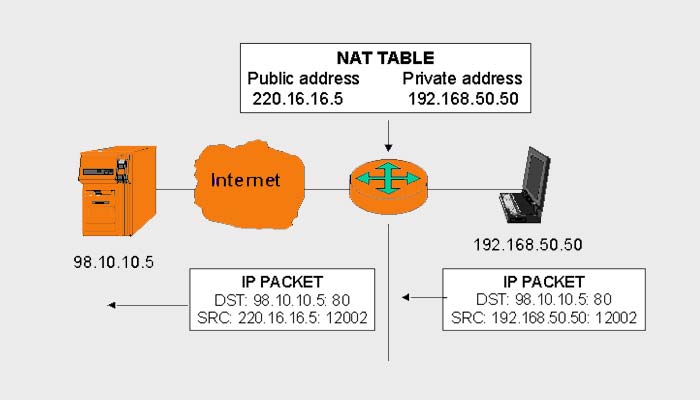As the name suggests Network Address Translation (NAT) is nothing but it is a process of converting local IP addresses into the global IP addresses and global IP addresses into the local IP addresses. In the 1990s the number of networking devices was increasing in millions and the number of unique IP addresses was decreasing. So to solve the problem of depleting IP addresses NAT was developed to translate the addresses between the public network and the local private network. To know more about Advantages and Disadvantages of Network Address Translation, keep reading this article till the end.
Then next question arises that why we need to convert all these addresses and what are the advantages of these conversions so, here are some advantages listed below:
Advantages of Network Address Translation (NAT)
- NAT simplifies network management in such a way that the administrator is free to use any scheme for local addressing in IPv4.
- With NAT every device in a private environment it doesn’t need a unique public IP address to access the public network.
- NAT allows the local addressing to be independent of any external constraints.
- NAT saves the IP addresses in two levels first by not using the global IP address in the local addressing and second local addresses are also not used in the global addressing mainly in IPv4 system.
- NAT also brings safety to your networking environment by not exposing the internal addressing structure to the outsider.
- Nat also provides an extra level of privacy by not reveling the device IP address or the sending ad receiving of traffic.
- NAT increases network flexibility in term of establishing any network.
- NAT significantly decreases the cases of address overlapping.
- With NAT local devices are privately addressed that’s why it is easier to add a new client in the local network environment.
- NAT allows using the private IP addressing system even if the service provider changes.
With all the advantages listed above NAT also has some of the disadvantages which are listed below:
Disadvantages of Network Address Translation
- As NAT converts the IP addresses so this conversion may be time-consuming.
- NAT is a memory consuming technology as it converts the local and global IP addresses so it saves hose translation in the memory.
- There are some applications that tend to have some compatibility issues with NAT.
- It sometimes restricts some incoming connections which are important.
- NAT doesn’t perform well at a higher scale.
- NAT was a temporary technology and face several issues to work with new technologies.
- Nat basically changes the address which makes the troubleshooting complex.
Also, read…
- NAT Types Explained- Inside (Local, Global), Outside (Local, Global)
- Types of NAT (Network Address Translation)-Static, Dynamic, PAT
Download Advantages and Disadvantages of Network Address Translation in pdf – Click here

